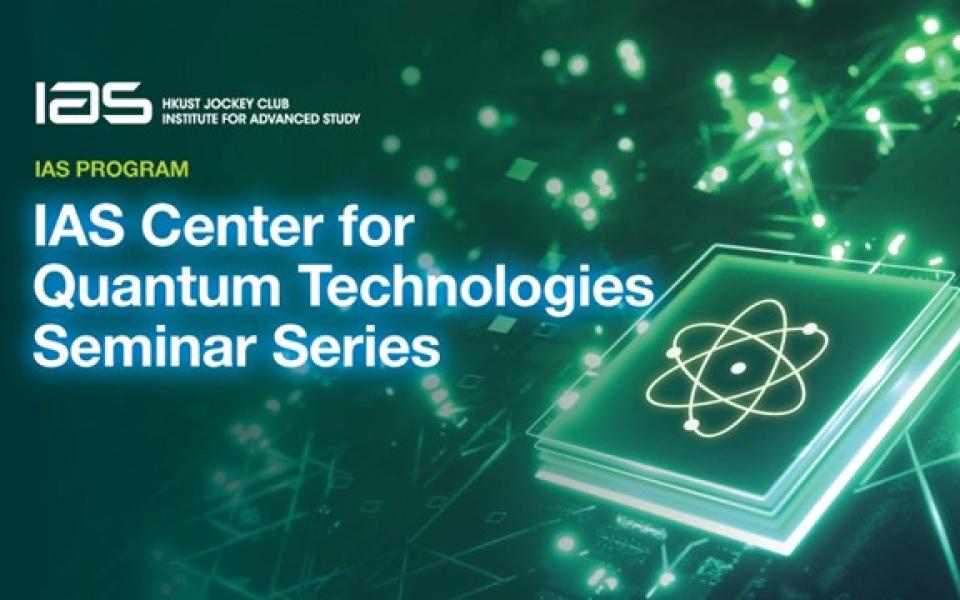For Attendees' Attention
This seminar will be held in mixed mode.
To attend the seminar in person, please go to IAS1038, 1/F, Lo Ka Chung Building, Lee Shau Kee Campus, HKUST (For non-HKUST member, please contact us at ias@ust.hk for registration.)
To attend the seminar online, please join the Zoom meeting at: https://hkust.zoom.us/j/91374300044 (Meeting ID: 913 7430 0044 and Passcode: 937658)
Abstract
The alkali-doped fullerides A3C60 (A = K, Rb, Cs) exhibit strong correlation and unconventional superconductivity (SC) in bulk and thin films. In the first part of the seminar [1], the speaker will investigate the unconventional pairing mechanism in bulk A3C60 by studying the properties in both normal and superconducting phases within dynamical mean-field theory in the Nambu formalism. He will show that the local orbital fluctuations are substantially enhanced in the superconducting state and provide the pairing glue in A3C60, supporting the spin/orbital freezing theory of unconventional superconductivity [2, 3]. The speaker and his research group have also found a lock-in phenomenon between the SC gap (fermionic) and the local orbital fluctuation energy (bosonic), which is consistent with the experimentally observed universal linear relationship between the SC gap and magnetic resonance energy in a broad range of unconventional superconductors, including cuprates, iron arsenides, heavy-fermion compounds.
Epitaxially grown K3+xC60 thin films exhibit a Mott insulating state in the monolayer and a strong electron-hole doping asymmetry in the superconducting state in the trilayer [3], which asymmetry is absent in the three-dimensional bulk limit. In the second part of the seminar [4], using density-functional theory plus dynamical mean-field theory, the speaker will show that this doping asymmetry results from a substantial charge reshuffling from the top layer to the middle layer. While the nominal filling per fullerene is close to n=3, the top layer rapidly switches to an n=2 insulating state upon hole doping, which implies a doping asymmetry of the superconducting gap. The interlayer charge transfer and layer-selective metal-insulator transition result from the interplay between crystal field splittings, strong Coulomb interactions, and an effectively negative Hund coupling. This peculiar charge reshuffling is absent in the monolayer system, which is an n=3 Mott insulator, as expected from the nominal filling.
References:
[1] C. Yue, S. Hoshino, A. Koga and P. Werner, Phys. Rev. B 104, 075107 (2021)
[2] S. Hoshino and P. Werner, Phys. Rev. Lett. 115, 247001 (2015), Phys. Rev. Lett. 118, 177002 (2017)
[3] M.-Q. Ren, S. Han, S.-Z Wang, J.-Q. Fan, C.-L. Song, X.-C. Ma, and Q.-K. Xue, Phys. Rev. Lett. 124, 187001 (2020)
[4] C. Yue, Y. Nomura, and P. Werner, Phys. Rev. Lett. 129, 066403 (2022)
About the Speaker
Dr. YUE Changming obtained his PhD from the Institute of Physics, Chinese Academy of Sciences in January 2019. He then joined the University of Fribourg and is currently a Postdoctoral Researcher at the Department of Physics.
The research area of Dr. Yue is in theoretical condensed matter physics, with major interests in developing and applying novel numerical algorithms to study strongly correlated electronic systems (SCES), unconventional high-temperature superconductivity (HTSC), and topological matter. The main theoretical methods he used to study SCES and HTSC are the dynamical mean-field theory (DMFT) and its non-local cluster extensions in the Nambu formalism, combined with density-functional theory for the realistic materials. He has developed some novel algorithms and cutting-edge techniques in the hybridization-expansion continuous-time quantum Monte-Carlo method, which can solve the realistic multi-orbital Anderson impurity model mapped from DMFT very efficiently, including an algorithm for heavy fermion system in the Kondo regime, anomalous worm sampling to study superconductivity of the multiband systems with very narrow or flat bands.
Dr. Yue has contributed to the well-known open-source software, WannierTools, to study topological matter. He has also developed the recursive Green's function method, which is efficient in calculating the hinge states in realistic materials.
About the Program
For more information, please refer to the program website at https://iascqt.hkust.edu.hk/.
https://ias.hkust.edu.hk/events/strong-correlation-and-unconventional-superconductivity-in-bulk-and-trilayer-alkali-doped
